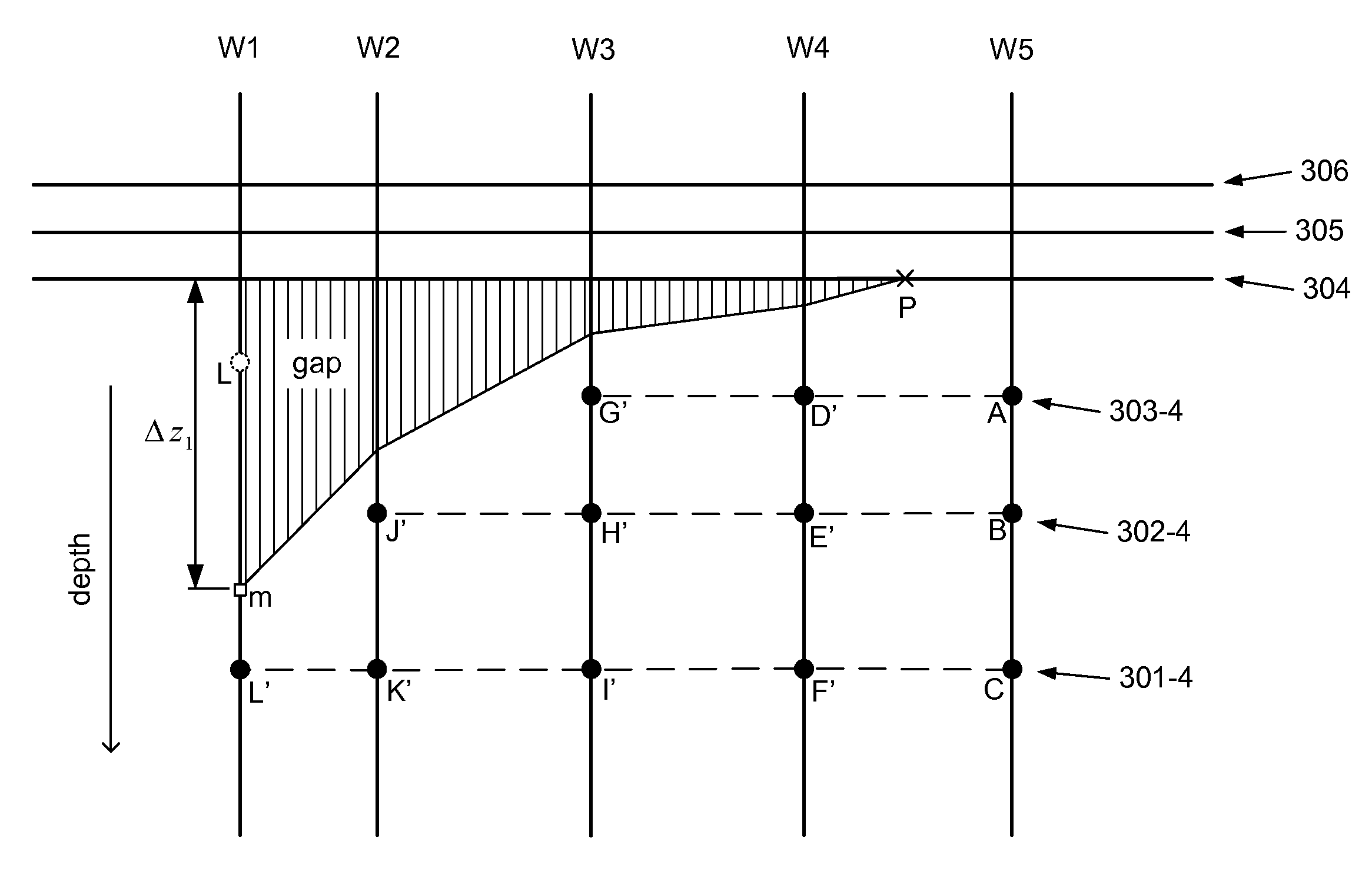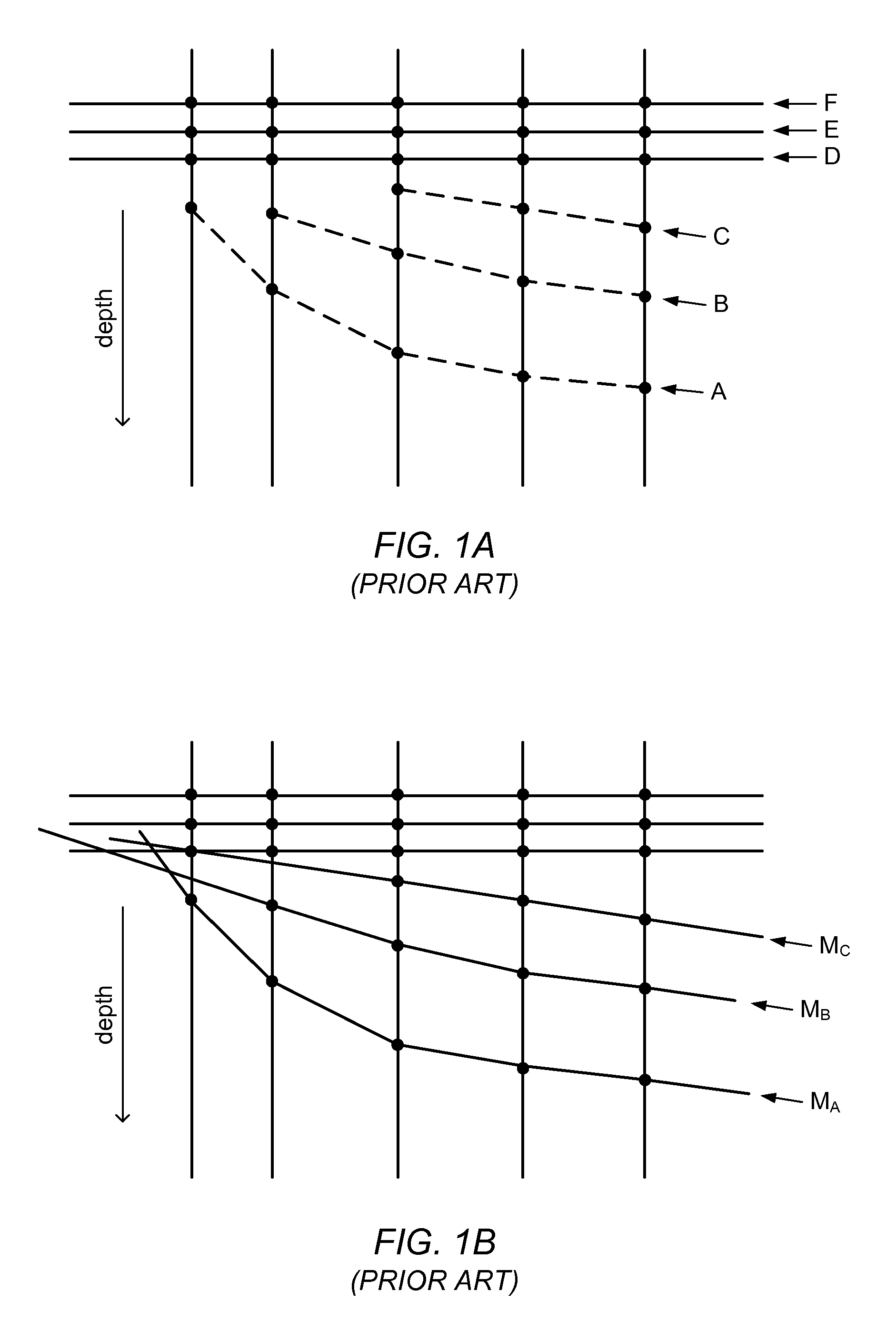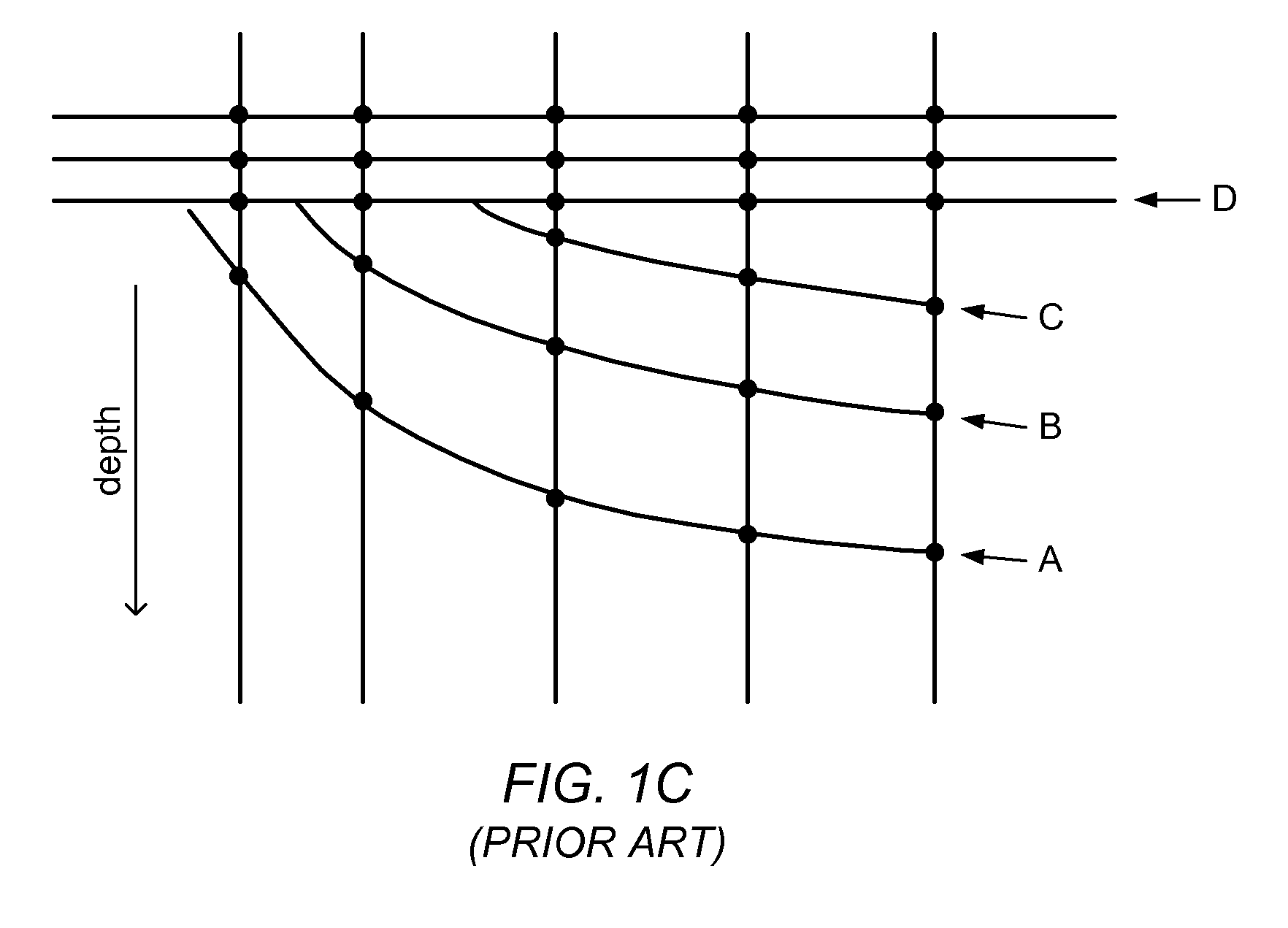Adding positional information for surfaces in a geological formation after transforming to a gapped representation
a geological formation and position information technology, applied in the field of interpretive earth modeling, can solve the problems of limited surface sample points that can be collected in a geological formation, high drilling costs, and insufficient surface sampling density, and achieve the effect of enhancing the quality of surface modeling
- Summary
- Abstract
- Description
- Claims
- Application Information
AI Technical Summary
Benefits of technology
Problems solved by technology
Method used
Image
Examples
Embodiment Construction
[0033]In one set of embodiments, a computer-implemented method for operating on a geological data set, that includes well picks for a collection C of wells in a geological formation, may involve the following operations, as illustrated in FIG. 2.
[0034]At step 110, a computer may receive user input selecting a subset S of the wells from the collection C. To facilitate selection of the subset S, the computer may display a window 210 containing a two-dimensional plot of well positions in a field, as illustrated in FIG. 3A. (The window illustrates well positions as seen looking down on the field.) The user may select wells by clicking on (or otherwise identifying) the positions of the wells in the window. In some embodiments, the user input specifies an ordered sequence of wells. While the example of FIG. 3A shows a sequence of five wells (W1 through W5) that have been selected by a user, any number of wells may be selected.
[0035]At step 115, the computer may display a window showing a ...
PUM
 Login to View More
Login to View More Abstract
Description
Claims
Application Information
 Login to View More
Login to View More - R&D
- Intellectual Property
- Life Sciences
- Materials
- Tech Scout
- Unparalleled Data Quality
- Higher Quality Content
- 60% Fewer Hallucinations
Browse by: Latest US Patents, China's latest patents, Technical Efficacy Thesaurus, Application Domain, Technology Topic, Popular Technical Reports.
© 2025 PatSnap. All rights reserved.Legal|Privacy policy|Modern Slavery Act Transparency Statement|Sitemap|About US| Contact US: help@patsnap.com



